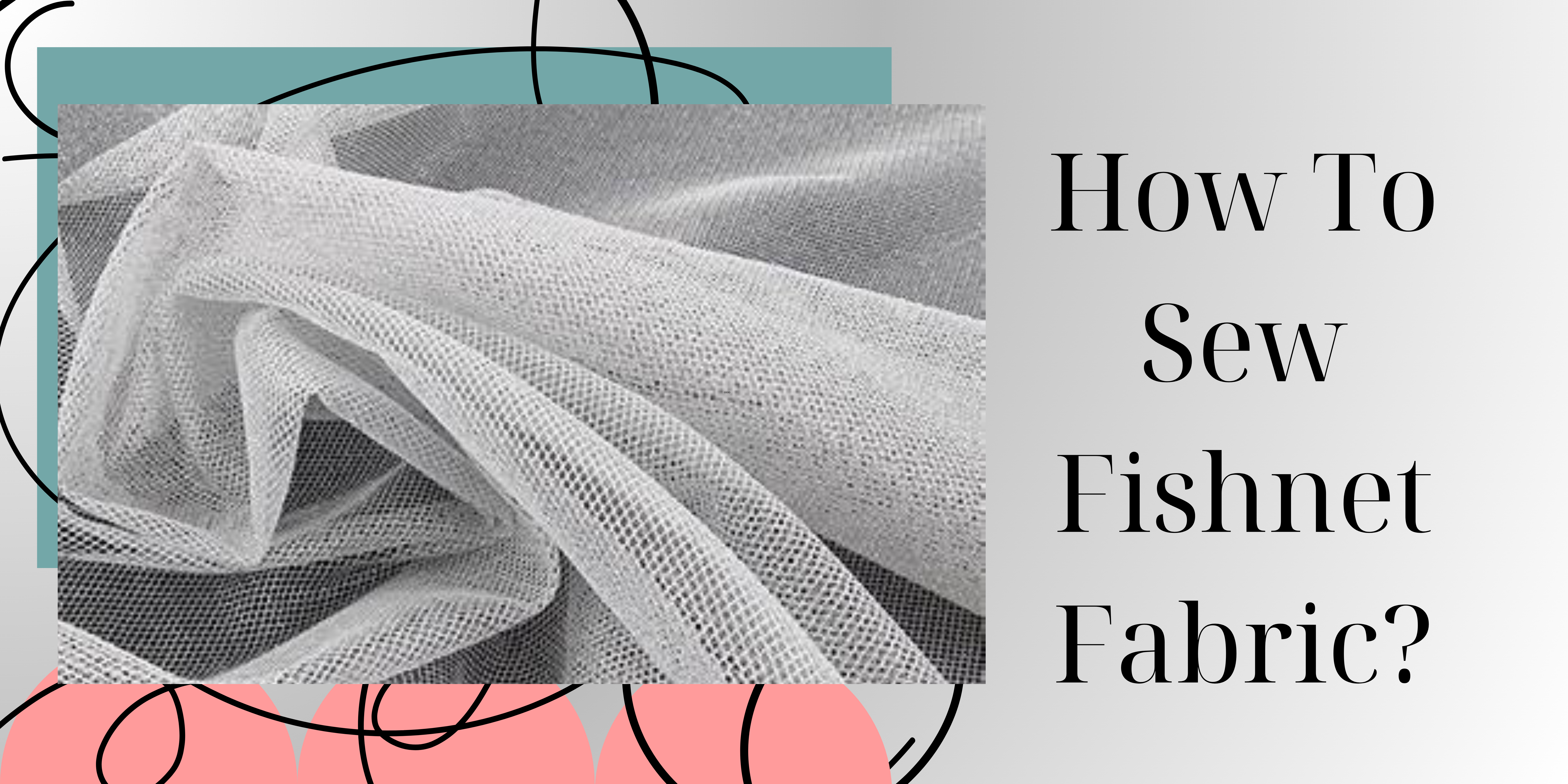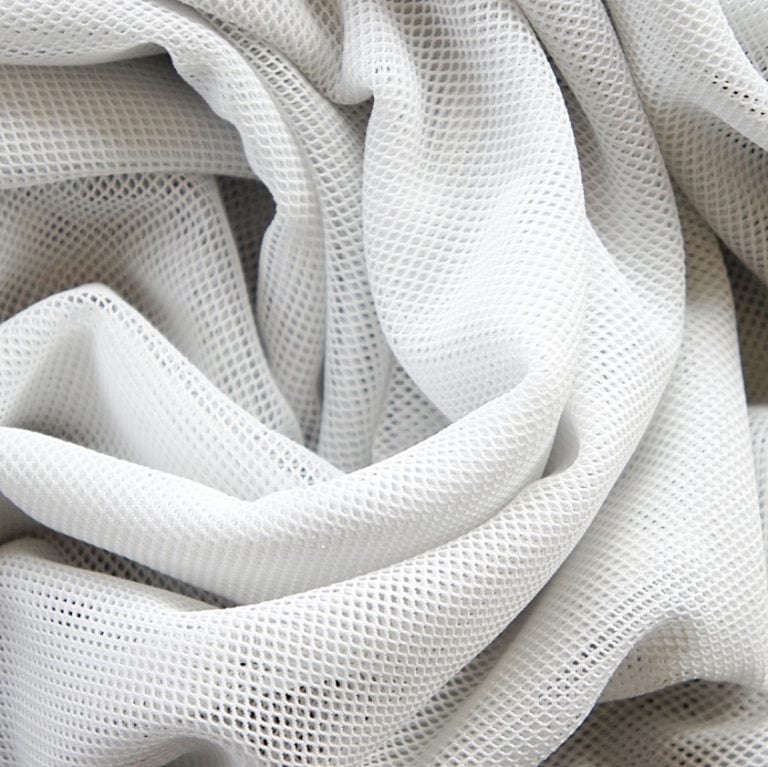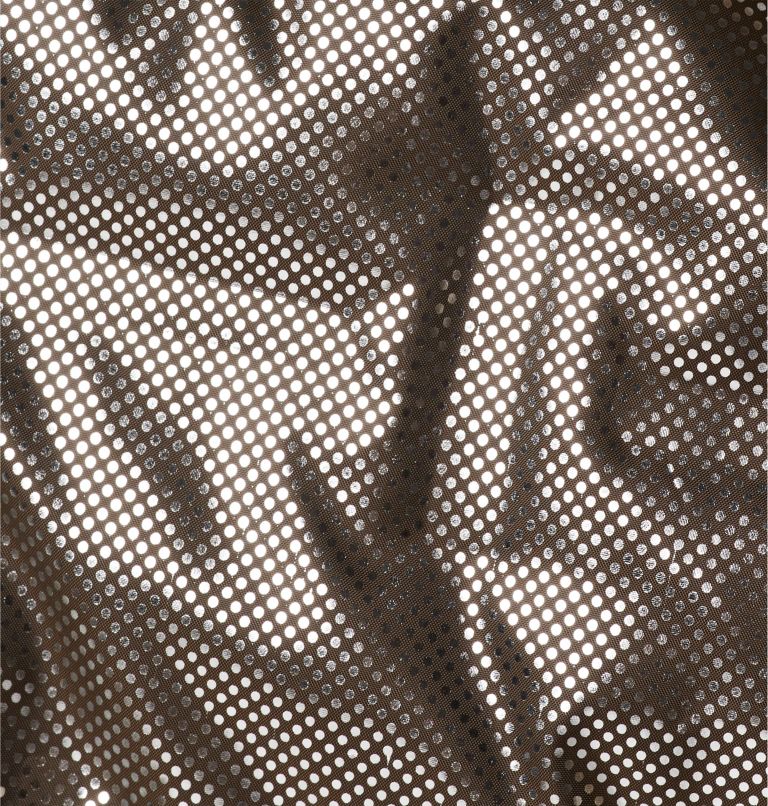How To Sew Fishnet Fabric?

Fishnet fabric, known for its open and airy design, can add a touch of allure to various sewing projects. Whether you’re creating athletic wear, lingerie, or delicate pouches, understanding how to sew mesh fabric is essential for achieving professional-looking results.
Consider using vibrant and breathable fabrics when designing pouches reusable produce sacks. This guide tells you how to sew fishnet fabric.
Preparing Your Materials
Embarking on a project involving mesh fabric requires careful preparation, and having the right tools is crucial. Begin the process by assembling a comprehensive set of tools to ensure a seamless and successful sewing experience. Here’s a detailed guide on the essential items you’ll need:
- Sewing Machine: The cornerstone of any sewing project, a reliable sewing machine is essential. Ensure your overlock machine is in good working order with appropriate settings for working with delicate mesh fabric.
- Polyester Thread: Opt for high-quality polyester thread to achieve sturdy and durable stitches. Polyester’s strength and resilience make it an ideal choice for sewing mesh fabric.
- Ballpoint Needle: When working with mesh fabric, the choice of needle is crucial. Use a ballpoint needle with its rounded tip to prevent snags on the loosely woven fabric, ensuring a smooth and even stitching process.
- Rotary Cutter: For precision in cutting, a rotary cutter is invaluable. Its sharp blade allows for accurate and clean cuts, particularly crucial when dealing with the open structure of mesh fabrics.
- Pattern Weights: Keep your mesh fabric in place during cutting by using template weights. These weights prevent shifting, ensuring that your fabric stays aligned with your chosen pattern.
- Pressing Cloth: A pressing cloth is essential for protecting delicate mesh fabrics from direct heat during ironing. It acts as a barrier, preventing damage while ensuring a polished finish.
Choosing the Right Needle
Navigating the intricacies of sewing mesh fabric requires attention to detail, starting with the needle selection. Here’s why opting for the right needle is crucial:
- Loosely Woven Material: Mesh fabric is known for its open and airy weave. To prevent snags and ensure smooth stitching, use a ballpoint needle with a rounded tip. This needle type is designed to glide through the loosely woven material without causing damage.
- Smooth and Even Stitches: The rounded tip of the universal needle promotes even stitches, contributing to the overall quality and aesthetics of your finished project. This attention to detail ensures a professional look while maintaining the delicate nature of the mesh fabric.
Setting Up Your Sewing Machine
Begin by selecting a standard sewing machine that suits your project’s requirements. Ensure that the machine is equipped with the necessary features for handling lightweight fabric and delicate fabric.
Opt for high-quality polyester thread that complements the characteristics of mesh fabric. Polyester thread provides strength and durability, ensuring your stitches withstand the unique challenges posed by mesh.
Mesh fabrics require special attention when it comes to needle selection. Employ a universal needle with a rounded tip to prevent snags on the loosely woven material, facilitating a smooth and snag-free stitching process.
Adjusting Stitch Length
When sewing seams on fishnet fabric, utilize a standard straight stitch. To prevent the fabric from getting entangled in the feed dogs, make sure to adjust the stitch length to a shorter setting. This precautionary measure ensures a hassle-free sewing process.
Experiment with different stitching techniques to enhance the durability and finish of your mesh projects. Consider using a narrow zigzag stitch to secure the edges of the mesh. Zigzag stitching not only prevents fraying but also contributes to a clean and polished final appearance.
Mesh fabric requires a delicate touch, and controlling your sewing speed is crucial. Maintain a moderate pace to ensure precision and prevent any issues with the fabric slipping or bunching.
Consider Lightweight Fabrics
Mesh fabrics often fall into the category of lightweight materials. Take this into account when adjusting your machine settings to accommodate the unique characteristics of lighter fabrics.
Enhance the edges of your mesh creations by incorporating bias tape. This not only adds a decorative touch but also reinforces the edges raw, ensuring longevity and durability. When gathering mesh fabric, zigzag stitches can be particularly useful. Experiment with different stitch settings to achieve the desired gather and prevent the fabric from unraveling.
Before embarking on your main project, conduct test runs on scrap pieces of mesh fabric. This allows you to fine-tune your machine settings and perfect your technique before working on the actual project.
Cutting and Handling Mesh Fabric
When it comes to working with delicate mesh fabric, the key lies in meticulous cutting techniques that ensure precision and cleanliness. Follow these steps to master the art of cutting mesh fabric.
Equip yourself with a rotary cutter, a versatile tool renowned for its precision. The sharp rotary blade allows for effortless cutting through the mesh fabric, ensuring a clean and accurate gathered edge.
Maintain control and stability during the cutting process by using sample weights. These weights secure the mesh fabric in place, preventing any unintended shifts and ensuring that your cuts align with the desired pattern.
Before bag making each cut, carefully place the pattern weight along the edges of the pattern. This thoughtful approach guarantees that the mesh fabric remains taut and does not buckle or warp during the cutting process.

Dealing with Raw Edges
Mesh fabric’s unique nature includes edges that may unravel easily, demanding careful consideration during the sewing process. Follow these steps to effectively manage and secure raw edge.
Employ a short straight stitch foot when sewing mesh fabric. This specialized walking foot provides stability and control, preventing the fabric from bunching or slipping as you work on seams and edges.
When operating a sewing machine, it’s important to select the appropriate settings for sewing mesh to achieve optimal results. Sewing mesh requires finesse, and using a sewing machine with adjustable settings allows for precise control over the stitching process. To sew mesh fabric successfully, ensure your sewing machine is equipped with a needle suitable for delicate materials.
Stabilize with Zigzag Stitch
To further fortify the rough edges, consider using a zig-zag stitch. This versatile stitching technique not only adds a mesh layer of reinforcement but also prevents fraying, ensuring a durable and polished finish.
Take a mindful approach to edge finishes, ensuring that each seam receives the attention it deserves. By incorporating a wide straight stitch foot and zig-zag stitching, you contribute to the overall stability of your mesh fabric project.
Mesh fabric’s susceptibility to unraveling demands proactive measures. By using appropriate stitching techniques and the right foot, you create seams that not only withstand bridal wear and tear but also maintain the integrity of the mesh fabric.

Techniques for Sewing Mesh Fabric
When working with delicate and intricate mesh fabric, mastering advanced sewing techniques is key to achieving a professional finish. Explore these sophisticated methods to elevate your craft:
Employing French Seam
French seams stand out as a refined technique, especially suited for finishing seams on delicate fabrics like fishnet. This method involves enclosing the raw edge within the seam itself, resulting in a seamless and polished appearance. By adding seams to your repertoire, you bring two layers of elegance to your mesh fabric projects.
When you sew mesh, use a steady hand to guide the fabric through the machine, preventing any uneven stitches or snags. Cutting mesh fabric for pouches or reusable produce sacks necessitates precision to create clean and accurate edges. When making reusable produce sacks, sewing machine settings should be adjusted to accommodate the mesh fabric’s unique properties.
Crafting Versatile Pouches with Elasticized Thread
For those seeking to infuse flexibility into their mesh fabric creations, consider delving into the art of sewing pouches with fold-over elastic thread and a twin needle.
This innovative technique transforms mesh fabric into expandable pouches, perfect for reusable produce sacks or dynamic accessory storage. Crafting pouches from mesh fabric involves skillful sewing machine techniques to create durable and functional reusable items.
For successful sewing, adjust the sewing machine’s tension when working with mesh to prevent any puckering or distortion. Reusable produce sacks made from mesh can be stylish and eco-friendly, showcasing your sewing skills and commitment to sustainability.
Mastering the Art of Hemming Mesh Fabrics
Hemming mesh fabric can be a nuanced endeavor owing to its open structure. Navigate this challenge with finesse by employing a rolled hem or bias binding. These advanced hemming techniques not only address the unique characteristics of mesh fabric but also result in neatly finished edges, contributing to a clean and polished final look.
To create durable and versatile pouches for reusable produce sacks, it’s essential to skillfully sew mesh fabric with precision. When you sew mesh fabric for reusable produce sacks, consider using a zig-zag stitch to reinforce the edges and enhance the overall durability. Cut mesh fabric for pouches requires careful attention to detail, ensuring that the edges are clean and free from fraying.
Fine-Tuning Your Craft with Attention to Detail
Dive into the intricacies of sewing with mesh fabric by incorporating additional nuances to your approach. From pre-wash to working with multiple layers, exploring the use of a standard overlocking stitch for stability, and employing a roller foot for smoother stitching over various fabric thicknesses, each detail contributes to your mastery of mesh fabric.
Sewing mesh with a serger can be advantageous when crafting reusable produce sacks, as it helps create professional-looking seams. Sewing mesh involves unique challenges, and adjusting the sewing machine’s tension is crucial for achieving smooth and even stitches.
To add a decorative touch to your pouches for reusable produce sacks, consider using contrasting thread colors when you sew mesh fabric. Before sewing mesh for reusable produce sacks, pre-wash the fabric to soften it and minimize the risk of shrinkage during subsequent washes.
Enhancing Durability with Cool Iron and Self-Healing Mat
Elevate the longevity of your mesh fabric projects by incorporating best practices such as using a cool iron for heat-sensitive fabrics and working on a self-healing mat to preserve your work surface. These additional steps showcase a commitment to quality and durability in your sewing endeavors.
Crafting pouches from cut mesh fabric allows for breathability, making them ideal for storing fresh produce and reducing plastic waste. Use a cutter to cut mesh fabric with precision, ensuring that your reusable produce sacks have neat and well-defined edges. When you sew mesh for pouches, experiment with different stitch lengths to find the optimal setting for securing the fabric while maintaining flexibility.
Additional Tips for Success
Embarking on projects with double layers of mesh requires precision and finesse. Implement these strategic measures to ensure success:
1. Adjusting Presser Foot Pressure
When dealing with two layers of mesh, intricacies come to the forefront. Fine-tune your sewing experience by adjusting the presser foot pressure. This simple yet impactful adjustment keeps the fabric taut, facilitating even stitches and preventing any undesirable inconsistencies.
2. Gentle Handling for Delicate Mesh
Mesh fabric demands a gentle touch. To optimize your crafting experience:
- Pre-wash the fabric to introduce a soft and supple quality, enhancing its overall manageability.
- Utilize a cool iron for pressing seams, providing the finesse required without compromising the material’s integrity.
3. Elevating Stability with Smart Techniques
Elevate the stability of your sewing endeavors by incorporating strategic measures.
Introduce tissue paper or tear-away stabilizer beneath the mesh fabric during the sewing process. These supportive fabric layers not only enhance stability but also prevent the fabric from being inadvertently pulled into the machine’s feed dogs.
4. Addressing Nuances for a Flawless Outcome
When cutting mesh, employ precision tools like a rotary cutter for accuracy. Consider using pattern weights to secure the fabric in place, ensuring clean and precise cuts.
For those venturing into creating expandable pouches, the strategic use of bias binding and fold-over elastic adds versatility and durability to your mesh fabric projects.

Embrace Success with a Holistic Approach
As you navigate the intricacies of sewing mesh fabric, remember that success lies in the details. Implementing these additional tips ensures a comprehensive and meticulous approach, leading to impeccable results in your mesh fabric creations.
When sewing mesh fabric, using a delicate touch is crucial to maintain the fabric’s integrity. The process of sewing mesh involves carefully maneuvering the fabric through the machine to avoid snags and tears. To sew mesh fabric successfully, ensure that your machine is equipped with the appropriate settings for handling delicate materials. When you sew mesh fabric, consider using a specialized sewing power mesh for added durability and stability.
Creating reusable produce sacks from mesh involves precise stitching to ensure their longevity. Treat mesh with care involves pre-washing the fabric to soften it and reduce any stiffness. Sewing mesh can be a bit tricky due to its open structure, so take your time and use appropriate techniques. Cut mesh fabric requires precision, and using a rotary cutter can help achieve clean and accurate cuts.
Baby socks made from mesh fabric require meticulous sewing to ensure a snug and comfortable fit. Using the right machine feet when working with mesh is essential for achieving professional and polished results.



